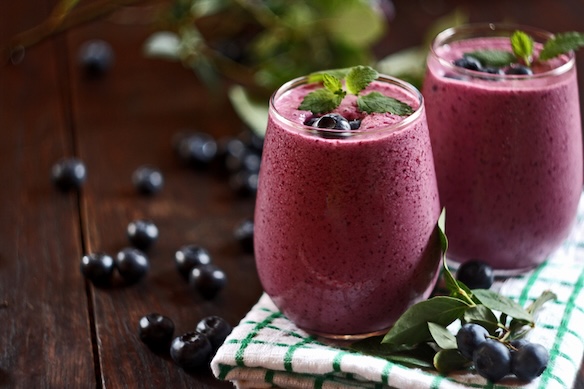Whether you're trying to lose weight, regulate your digestion, or are simply interested in improving your digestive health, fiber is an important part of any nutrition plan. Fiber often gets overlooked compared to protein, carbs, and fats. Yet, dietary fiber plays a vital role in digestion, heart health, weight management, and overall well-being. Within the world of fiber, there are two main types—soluble fiber and insoluble fiber—each offering unique benefits. Understanding how these fibers work, where to find them, and how they impact your health can help you make smarter choices for your diet.
Difference between soluble and insoluble fiber
Fiber is a type of carbohydrate that the body cannot fully break down or absorb. Instead of being digested like other nutrients, it passes through the digestive system, providing benefits along the way.
Soluble fiber dissolves in water and forms a gel-like substance. This property makes it excellent for slowing digestion, stabilizing blood sugar levels, and supporting heart health. Insoluble fiber does not dissolve in water. Instead, it adds bulk to stool and helps food move more quickly through the digestive tract, preventing constipation and promoting regularity. Both types of fiber are important for supporting healthy digestion and helping you feel your best.
Think of soluble fiber as the stabilizer in your diet and insoluble fiber as the cleanser. Both are essential, and together they contribute to a balanced digestive system.
How each type of fiber affects digestion and health
The effects of soluble and insoluble fiber go far beyond keeping your digestive system running smoothly. Each plays a unique role in supporting long-term health.
Some of the benefits of soluble fiber include:
- Supports heart health: By binding with cholesterol particles, soluble fiber helps lower LDL (“bad”) cholesterol levels, reducing cardiovascular disease risk.
- Regulates blood sugar: Since it slows down the absorption of sugar, soluble fiber helps prevent rapid blood sugar spikes and crashes—especially important for people managing diabetes or insulin resistance.
- Feeds gut bacteria: Soluble fiber is a prebiotic, meaning it nourishes beneficial gut microbes. A healthy gut microbiome has been linked to improved immunity, better mood regulation, and even reduced inflammation.
Some of the benefits of insoluble fiber include:
- Promotes bowel regularity: Insoluble fiber increases stool bulk and accelerates the passage of waste, reducing constipation, bloating, and discomfort.
- Supports digestive health: It helps prevent conditions like diverticulosis and may lower the risk of colon cancer by keeping waste moving efficiently through the colon.
- Provides a feeling of fullness: While it doesn’t directly impact blood sugar like soluble fiber, insoluble fiber helps you feel satisfied after meals by physically filling the stomach.
Both types of fiber work together: soluble fiber supports nutrient absorption and metabolic health, while insoluble fiber keeps the digestive tract clean and regular.
Food sources of soluble vs. insoluble fiber
To reap the full benefits of fiber, it’s important to include a variety of foods in your diet. Many fiber-rich foods contain both soluble and insoluble fiber, but some lean more heavily toward one type.
Foods high in soluble fiber include:
- Oats and oatmeal
- Barley
- Legumes (beans, lentils, chickpeas)
- Apples, oranges, and pears
- Carrots and sweet potatoes
- Flaxseed and chia seeds
- Psyllium husk
Foods high in insoluble fiber include:
- Whole wheat and bran
- Nuts and seeds (especially with skin)
- Brown rice and whole grains
- Leafy greens (spinach, kale, collard greens)
- Broccoli, cauliflower, and green beans
- Potato skins
- Fruits with edible peels (apples, grapes, plums)
For optimal health, most people should aim for about 25–38 grams of fiber per day, depending on age and gender. Incorporating a mix of both fiber types helps cover all bases for digestive and metabolic wellness.
If you struggle to get enough fiber into your diet through foods, you may want to consider using a fiber supplement. Many fiber supplements dissolve easily in water, and are a simple way to boost the amount of fiber in your diet. Just like when you're adding fiber-rich foods to your diet, be sure to take it slow if you decide to try supplements. Add just a bit each day until you understand how well your body tolerates the supplement. Of course, it's a good idea to talk with your healthcare provider before adding any supplements to your diet.
Fiber's role in weight management and blood sugar control
One of the biggest advantages of fiber is its role in weight management and blood sugar regulation—two areas where diets often fall short.
Fiber promotes satiety, or the feeling of fullness after eating. Soluble fiber slows digestion and helps meals feel more satisfying, reducing the likelihood of overeating. Insoluble fiber physically takes up space in the stomach, which also contributes to fullness. Together, they support portion control and reduce unnecessary snacking.
Research shows that people who eat high-fiber diets tend to weigh less and are more successful at maintaining weight loss. This is partly because high-fiber foods are often nutrient-dense and lower in calories compared to processed, fiber-poor options.
For individuals with type 2 diabetes or prediabetes, fiber is particularly valuable. Soluble fiber slows carbohydrate absorption, leading to steadier blood sugar levels. This can reduce the need for insulin and lower the risk of blood sugar crashes. Even for those without diabetes, a high-fiber diet helps stabilize energy levels throughout the day, preventing the highs and lows associated with refined carbs and sugary foods.
Choosing the right fiber for your goals
If you're unsure of where to start when it comes to adding fiber to your diet, you're not alone. Both soluble and insoluble fiber are necessary, but the right balance depends on your personal health goals and digestive needs.
Follow these tips to effectively increase your fiber intake to meet your unique health and wellness needs:
- For heart health: Focus on soluble fiber from oats, beans, and flaxseed to help lower cholesterol.
- For constipation relief: Emphasize insoluble fiber from whole grains, vegetables, and fruit skins to keep things moving.
- For blood sugar management: Soluble fiber sources like lentils, apples, and psyllium husk are especially effective.
- For weight loss and satiety: Aim for a balance — soluble fiber keeps hunger at bay, while insoluble fiber provides fullness and digestive support.
- For overall gut health: Include both, since soluble fiber nourishes healthy bacteria and insoluble fiber promotes bowel regularity.
If you’re new to increasing fiber intake, do so gradually and drink plenty of water. Too much fiber too quickly can cause gas, bloating, or discomfort (especially if you deal with digestive issues like diverticulitis). If you find that you don't feel well after increasing your fiber, eat a lower-fiber diet for a day or two, and slowly work your way up.
How Evidation can help you feel your best
If you're working to become the healthiest, happiest version of yourself, Evidation is here to help. When you download the free Evidation app, you'll be prompted to share the health data that you're already tracking (such as data from your wearable fitness tracker, data from your nutrition tracking app, etc.). Our app will use the information you share to find patterns and trends, and we'll offer you personalized, content-based insights that provide you with the information you need to take your health to the next level. Click here to learn more about how Evidation works and get started today.











